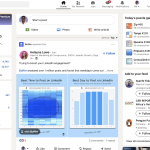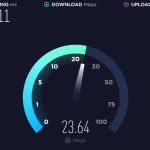
Let’s be honest—social media feels broken. Between algorithm-driven echo chambers, data privacy scandals, and the constant tug-of-war for attention, users are craving alternatives. That’s where decentralized social media platforms come in. Built on blockchain or peer-to-peer networks, they promise user control, transparency, and resistance to censorship. But what does their future really look like? Let’s dive in.
Why Decentralization? The Core Appeal
Decentralized platforms flip the script. Instead of a single company controlling your data, content, and even visibility, power shifts to users. Here’s why that matters:
- Ownership: You keep control of your posts, identity, and data—no shadow profiles or surprise data sales.
- Censorship resistance: Without a central authority, it’s harder to silence voices arbitrarily.
- Monetization: Creators can earn directly through crypto tips, NFTs, or ad-sharing models.
That said, decentralization isn’t a magic fix. Speed, scalability, and usability hurdles remain. But the trade-offs? For many, they’re worth it.
Current Trends Shaping the Space
Right now, decentralized social media is like a bustling startup hub—experimental, messy, but full of potential. A few key trends stand out:
1. The Rise of “Fediverse” Platforms
Mastodon, Pixelfed, and others use ActivityPub, a protocol letting different platforms interoperate. Think of it like email—you can have a Gmail account but still message someone on Yahoo. This interoperability is huge for avoiding platform lock-in.
2. Crypto-Native Communities
Platforms like Farcaster or Lens Protocol integrate crypto wallets, enabling features like token-gated communities or NFT-based profiles. For crypto enthusiasts, this feels natural. For mainstream users? It’s still a learning curve.
3. Data Sovereignty Tools
Projects like Bluesky’s AT Protocol let users choose where their data lives—imagine moving your social graph from Twitter to a new platform without losing followers. It’s early days, but the concept is powerful.
Challenges Holding Decentralization Back
For all the hype, decentralized platforms face real obstacles. Here’s the deal:
| Challenge | Why It Matters |
| User Experience | Setting up wallets or understanding protocols isn’t intuitive for most. |
| Content Moderation | Without central oversight, harmful content can spread unchecked. |
| Network Effects | People go where their friends are—building critical mass is tough. |
Honestly, these aren’t small issues. But they’re not insurmountable either.
What’s Next? Predictions for the Future
Hybrid Models Will Emerge
Pure decentralization might not win. Instead, expect blends—like platforms with decentralized backends but polished frontends. Think WordPress (open-source) meets Medium (user-friendly).
Niche Communities Will Thrive
Decentralized platforms excel at serving specific interests—artists, developers, activists. Unlike Twitter’s one-size-fits-all chaos, smaller, focused networks could flourish.
Regulation Will Loom Large
Governments won’t ignore decentralized spaces forever. Privacy laws, misinformation rules—how these platforms navigate compliance will make or break mainstream adoption.
Final Thoughts: A Shift, Not a Revolution
Decentralized social media won’t replace Instagram or TikTok overnight. But it doesn’t have to. For those tired of being products—not users—it offers something radical: choice. Whether that choice becomes widespread? Well, that’s the experiment unfolding now.










